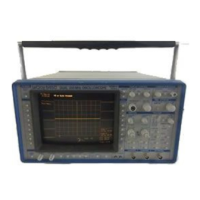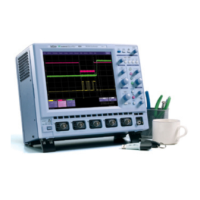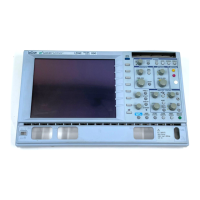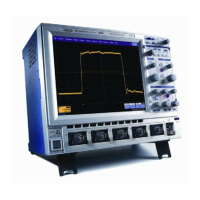Example:
When set to I00 nsec/div, the answer to the query would be:
TD 100E-09<CR><LF><END>,
where <CR><LF> is the default TRAILER, and
<END> = another <CR>, when using RS-232-C (unless modified with
the command RS CONF).
= EOI-line ACCOMPANYING <LF>, when using GPIB.
If the 9400A generates multiple responses to a single message
containing queries, it will send a separate response for each query.
7.4.5 Flushing of the 94OOA’s Output Buffer
When the 9400A generates an answer to a query or outputs a data stream
in response to a transfer command, the host computer should read the
data. If it fails to do so, the 9400A may become blocked when trying to
output data (this does not occur with a response of less than 80
characters, since the output is buffered).
~henever the 9400A receives a new command message, upon detection of
the <END> of this message, it flushes the output buffer of all
responses due to the previous command message. If the 9400A detects a
new <END> from a new command message while still treating a previous
command message, it aborts those (previous) commands which generate
output data, but not the new commands. The 9400A assumes that the user
is not interested in the answers to previous commands since he is
sending another command message rather than reading the responses.
7.4.6 Command Synchronization with Data Acquisition
Some remote commands cannot be executed at all times, e.g. it is not
possible to read channel 1 or channel 2 while the oscilloscope is armed
and waiting for a trigger, since the memories of the two channels are
continuously being written into.
The user can avoid such situations entirely by only executing
single-shot acquisitions (TRIG MODE SINGLE) and by checking that bit
of status byte 4 (TRIGGERED bit) is set to one (indicating that
acquisition is complete) before sending the READ command.
Another way is to send the command to read channel 1 or channel 2. The
9400A automatically defers the execution of this command until a
waveform has been acquired. It is thus possible to also read waveforms
while the instrument is in the trigger modes NORM or AUTO, i.e.
practically "on-the-fly".
7-6
Remote Operations

